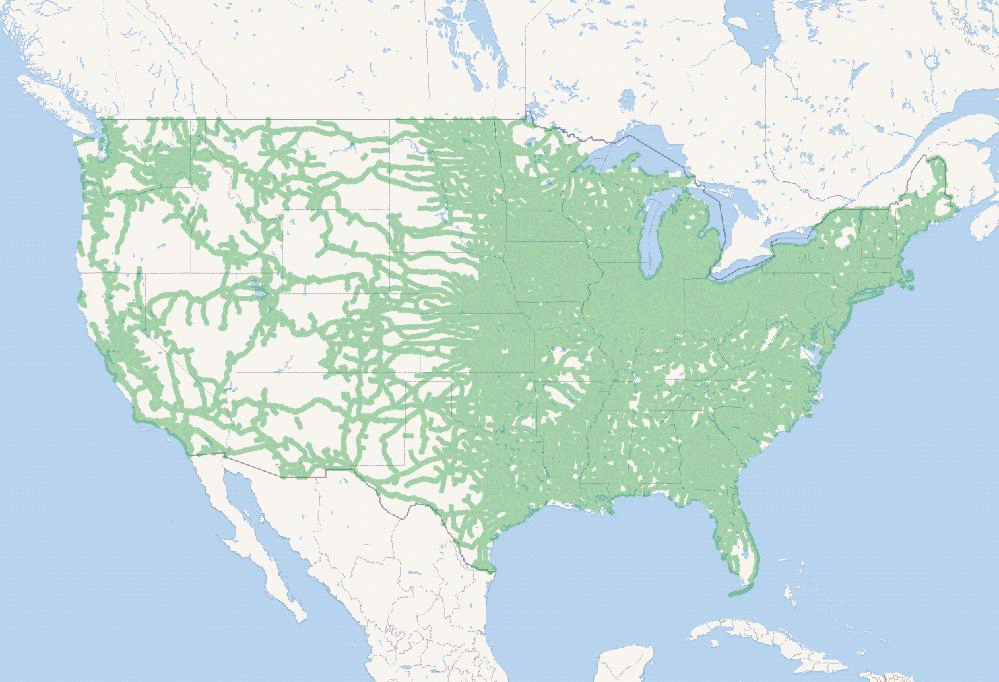What happened to rural communities when they lost access to railroads in the 20th century?
Nearly 40% of all railroads have been abandoned, but a digitized map of abandonments had not yet been constructed for research. This summer, Professor Dustin Frye and I constructed a digital map of railroad abandonments during different period in the 20th century.
Constructing the map required digitizing existing maps of abandonments and matching them to existing digital maps of historical railways. This was done “by hand” in GIS software, and required many hours of additional line-construction and archival research.
Using this exclusive data resource in conjunction with U.S. census data, we are now exploring the impact of railroad abandonment over time.


Railroad abandonments over time; Above: United States; Below: New York State
Our initial findings suggest that the regulatory regime has been a significant factor in whether railroad abandonments have had a strong impact on short- and long-term development. Prior to 1980, railroads were heavily regulated by the federal government and strictly controlled the abandonment process. Preceding a tidal wave of deregulation under Ronald Reagan, President Jimmy Carter deregulated American railroads through the Staggers Act of 1980.

President Carter signs the Staggers Act of 1980
Deregulation allowed railroad companies to abandon unprofitable lines without regard to the impact on rural communities. Consequently, our early findings suggest that communities that underwent abandonments after deregulation were more severely impacted. The data suggest that deregulated abandonments caused lower wages and a selective out-migration of poorer residents.
Moving forward, we will further solidify the evidence and explore agricultural shifts over the same period due to railroad abandonment. We will also examine satellite data to examine regional growth patterns around abandoned lines and their respective stations.
We hypothesize that agricultural areas shifted their mix of products in response to railroad loss, as certain products such as wheat are only feasibly transported via rail systems. We also expect that urban growth (as measured by satellite data) will slow or reverse in rural towns dependent on railroads and their associated industries.
This project was and continues to be exciting and fulfilling for us, and we’re immensely grateful to the Ford Scholars Program for their support this summer.
